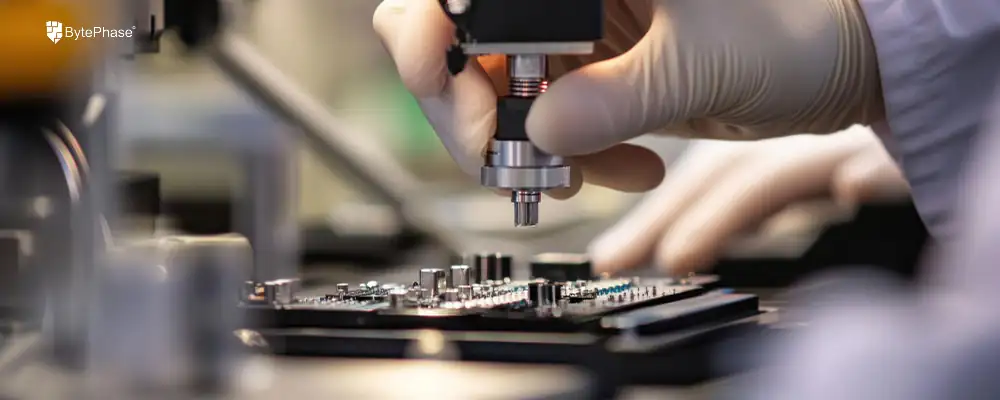The Counterfeit Conundrum: Mitigating Risk and Ensuring Quality in the Global Parts Supply Chain

Introduction
The success of the independent repair ecosystem hinges on a reliable supply of components. However, unlike Original Equipment Manufacturers (OEMs), independent shops operate in a decentralized, global supply market—a territory rife with risks, primarily the pervasive threat of counterfeit electronics.
A counterfeit part is not just a low-quality substitute; it is a direct threat to the repair shop’s reputation, profitability, and customer safety. A failed repair due to a bad part leads to costly warranty claims, wasted technician labor, and an erosion of customer trust that is difficult to rebuild. Mitigating this risk requires moving beyond simple price checks and implementing advanced Quality Control (QC) protocols.
The Three Pillars of Counterfeit Risk Mitigation
Effective quality control must be integrated into three distinct stages of the repair workflow: Sourcing, Receiving, and Bench Work.
1. Sourcing Protocols: Vetting the Vendor
The greatest risk is introduced at the point of purchase. Effective sourcing minimizes exposure to unreliable channels.
- Establish a Preferred Vendor List (PVL): Do not rely on one-off purchases. Develop a vetted list of 3-5 reliable suppliers. Vetting must include requesting supplier quality documentation, inspecting their return/warranty policies, and reviewing historical failure rates based on your internal tracking.
- Insist on Traceability: For high-value, serialized components (e.g., specific microprocessors or branded screens), demand proof of the part’s origin. While OEM sourcing may not be possible, documentation confirming the part’s path from a reputable distributor (even a secondary one) adds a layer of confidence.
- Inventory Segregation Mandate: In the BytePhase CRM or your chosen inventory system, parts must be tracked by supplier. This allows managers to quickly identify the vendor responsible when a batch of parts generates a statistically higher warranty rate.
2. Receiving Protocols: The Critical Inspection Phase
Before any part enters the usable inventory, it must pass a physical and technical check—a non-negotiable step that should be logged aBytePhase CRMgainst the purchase order.
| Inspection Area | Counterfeit Red Flags to Look For | Technical Equipment Required |
| Packaging & Marking | Mismatched date codes, inconsistent font size or logo placement, obvious sanding marks on IC surfaces, or poorly applied coatings. | High-magnification microscope (50x-100x), UV light source (for certain adhesives/inks). |
| Leads & Soldering | Bent or corroded leads, evidence of re-tinning, or residual flux on components advertised as “new.” | Digital calipers (to check component dimensions), basic inspection tools. |
| Basic Electrical Test | Test the component’s basic function before installation. For screens, check for dead pixels; for batteries, verify voltage and internal resistance (IR). | Quality Digital Multimeter (DMM), dedicated battery testing tool, visual diagnostic jigs. |
Strict Isolation: Any part failing this inspection must be immediately placed in a quarantine area—a secure, physically separate bin labeled “Do Not Use (DNU)“—and the vendor immediately notified for a Return Material Authorization (RMA).
The Soft Skills Audit: The Four Crucial Traits
Stop asking, “What are your greatest weaknesses?” Start asking behavioral questions that force candidates to demonstrate these traits:
3. Bench Protocols: Tracking Usage and Performance
The technician bench is the final quality checkpoint. Tracking part usage here closes the loop on quality control.
- Mandatory Part-to-Job Linking: Every single component used in a repair must be digitally linked to the specific job ticket in the CRM. This is crucial for cost tracking and for analyzing future warranty failures.
- Failure Rate Reporting: The shop must periodically run a report comparing component failure rates against their source vendor. If a vendor’s parts result in a 15% return rate while others are at 3%, that vendor must be retired from the PVL. This is a purely data-driven, actionable decision.
- ESD Compliance: Ensure that the receiving and inspection area, like the main repair bench, adheres to strict ESD (Electrostatic Discharge) standards to prevent premature failure that could be wrongly attributed to the new part.
By adopting these rigorous, technical, and data-driven controls, the independent repair shop transforms from a passive consumer of parts into an active manager of its own supply chain quality, mitigating risk and cementing its reputation for reliable service.



